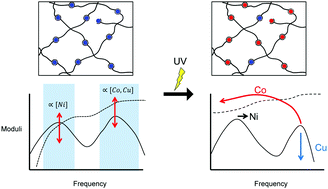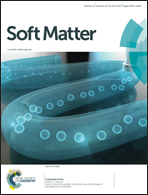Bio-inspired metal-coordinate hydrogels with programmable viscoelastic material functions controlled by longwave UV light†
Abstract
Control over the viscoelastic mechanical properties of hydrogels intended for use as biomedical materials has long been a goal of soft matter scientists. Recent research has shown that materials made from polymers with reversibly associating transient crosslinks are a promising strategy for controlling viscoelasticity in hydrogels, for example leading to systems with precisely tunable mechanical energy-dissipation. We and others have shown that bio-inspired histidine:transition metal ion complexes allow highly precise and tunable control over the viscoelastic properties of transient network hydrogels. In this paper, we extend the design of these hydrogels such that their viscoelastic properties respond to longwave UV radiation. We show that careful selection of the histidine:transition metal ion crosslink mixtures allows unique control over pre- and post-UV viscoelastic properties. We anticipate that our strategy for controlling stimuli-responsive viscoelastic properties will aid biomedical materials scientists in the development of soft materials with specific stress-relaxing or energy-dissipating properties.



 Please wait while we load your content...
Please wait while we load your content...